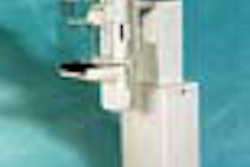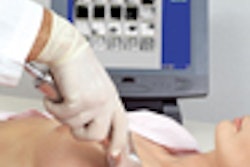The use of FDG-PET can significantly impact the diagnosis and treatment of patients suffering from thyroid cancer, according to an article in the January issue of the Journal of Nuclear Medicine.
In their study, researchers from the department of nuclear medicine at the University Hospital Eppendorf in Hamburg, Germany, performed 118 PET studies on 64 patients who had negative 131I and elevated human thyroglobulin (hTg) levels. Scans of 44 of the patients showed evidence of FDG uptake.
As a result, treatment was changed as a direct result of the FDG-PET findings in more than half (55%) of the patients with true-positive FDG uptake, according to the authors. Of these patients, 18 were treated with additional surgery and 14 received either 131I therapy or external irradiation.
The authors concluded that FDG-PET can help identify the location of recurring thyroid cancers, leading to surgery or systemic treatments. FDG-PET also helps identify cancers that are slow-growing or in remission, requiring no treatment, they added.
Conventional imaging techniques such as 131I or 123I scanning can detect some thyroid cancer recurrences, according to the Society of Nuclear Medicine. However, conventional scans are negative or inconclusive in a number of at-risk patients with elevated hTg levels, making it difficult to assess the location and virulence of the disease and chart an appropriate course of treatment, the authors wrote.
They found that FDG-PET can be particularly appropriate in these cases, noting that the effectiveness of the technique correlated directly to hTg levels. The higher the level, the higher the likelihood that FDG-PET would identify cancerous cells.
A number of patients with elevated hTg had negative FDG-PET scans. A negative FDG-PET finding can tell the physician that the cancer, while potentially present, is not growing aggressively, and can be watched, wrote Dr. Homer Macapinlac in comments accompanying the JNM article. A physician might also prescribe a therapy such as 131I to see if it will reduce the elevated hTg levels, wrote Macapinlac, of Memorial Sloan-Kettering Cancer Center in New York City.
Among patients in the study who had negative FDG-PET scans, five received no treatment. Of the remaining patients -- i.e., those who registered a negative result, but for whom other indications (such as high hTg levels) suggested that cancer was present -- three ultimately had surgery, one received 131I therapy, and 11 received no curative treatment because their disease was widespread. In the case of thyroid cancer, a 25% false-negative rate is considered acceptable, according to the SNM.
By Erik L. Ridley
AuntMinnie.com staff writer
January 18, 2001
Click here to post your comments about this story. Please include the headline of the article in your message.
Copyright © 2001 AuntMinnie.com



















